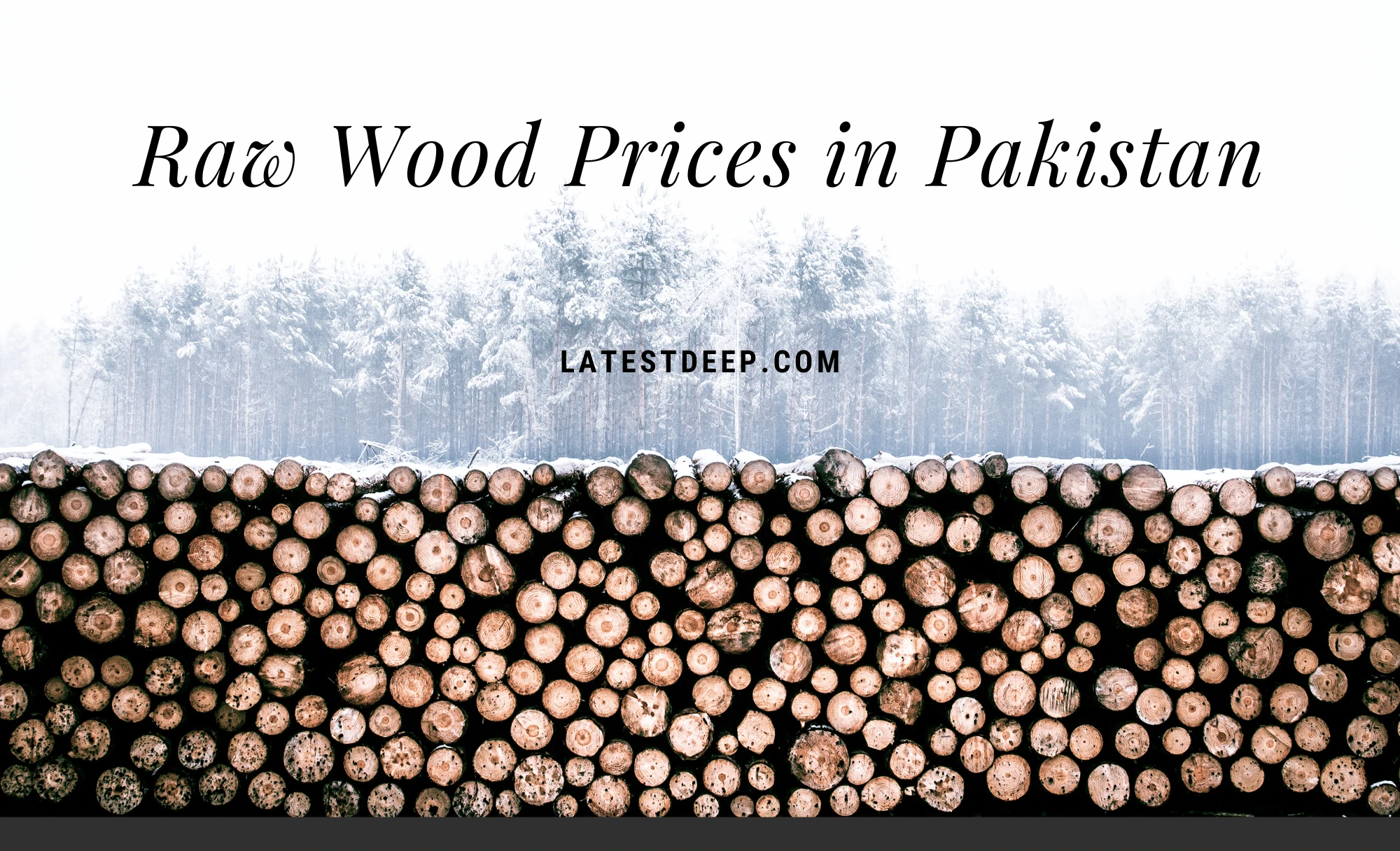Pakistan, with its rich history of woodworking and furniture craftsmanship, has always been a treasure trove of raw wood varieties. The market’s diversity, steeped in tradition and natural abundance, offers a plethora of options for artisans and consumers alike. Understanding raw wood types and their associated prices is vital for consumers, woodworkers, and environmentalists as it impacts livelihoods, the environment, and the furniture industry.
Raw Wood Prices | Wood Price in Pakistan
Raw wood prices are not merely a figure on a price tag they are an intricate web of factors that reflect the dynamics of one of Pakistan’s vital economic resources. Understanding these price fluctuations is key to making informed decisions in various sectors.
| Wood Name | Min. Price | Max. Price | Unit |
| Kail Wood | PKR 3000 | PKR 4000 | cft |
| Partal | PKR 3000 | PKR 3800 | cft |
| Chir Wood | PKR 2500 | PKR 3300 | cft |
| Diyar Wood | PKR 7000 | PKR 8000 | cft |
| Mahogany Wood | PKR 8500 | PKR 9000 | cft |
| Deodar Wood | PKR 8500 | PKR 9000 | cft |
| Oak | PKR 9000 | PKR 9500 | cft |
| Ash Wood | PKR 10,000 | PKR 10,500 | cft |
Read More: Tile Bond Prices in Pakistan
Read More: CSD Price List Pakistan
Categories of Raw Wood
Hardwood vs. Softwood
Before you set out on your woodworking project, it’s crucial to understand the fundamental distinction between hardwoods and softwoods. Despite the names, the key differentiation lies in the tree’s seed structure rather than the wood’s actual hardness. Hardwoods come from angiosperm trees, which are characterized by broad leaves, annual shedding of leaves and xylem, and a more intricate growth pattern. Softwoods, however, originate from gymnosperm trees, with softer wood, simple cell structure, and often needle-shaped leaves.
In Pakistan, some common hardwoods include Sheesham, Teak, and Acacia, favored for their durability, strength, and resistance to wear and tear. Alternatively, the softwood category encompasses Cedar, Fir, and Pine, which are frequently chosen for their lower cost, easier workability, and lighter weight.
Popular Wood Types in Pakistan
Pakistan boasts a rich variety of raw wood species due to its diverse geographical and climatic conditions. Each wood type offers distinct qualities that cater to specific preferences and project requirements.
- Deodar
- Chir Pine
- Teak
- Walnut
- Ashwood
- Fir
- Hemlock
- Kail Wood
- Mahogany
- Partal
Each of these wood types possesses a unique inherent beauty that translates into distinctive furniture and crafts, something that any woodworker or buyer in Pakistan has learned to appreciate.
Read More: Lasani Sheet Price in Pakistan
Read More: Top 10 Paint Brands In Pakistan
Factors Influencing Raw Wood Prices
The price of raw wood is influenced by several interdependent factors:
Supply & Demand Dynamics
A core economic principle supply and demand plays a significant role in the price stability of raw wood. When demand outstrips supply, prices trend upwards. Conversely, during periods of oversupply, prices tend to fall.
Economic Factors
From inflation to currency exchange rates, Pakistan’s economic climate has a direct impact on the prices of raw wood. A stable economy usually leads to steady prices, while economic turmoil, such as high inflation or depreciation of the Pakistani Rupee, can cause prices to spike.
Government Policies & Regulations
Government policies and regulations, such as tariffs, logging quotas, and environmental restrictions, can either stabilize or disrupt raw wood prices. For instance, an increase in tariffs on imported wood can lead to increased demand for locally sourced timber, subsequently driving up prices.
Read More: Faisal Sanitary Price List
Read More: Fiber Door Price in Pakistan
How Raw Wood Prices Affect Various Sectors in Pakistan
Furniture Industry
Raw wood prices are a significant component of the cost structure in the furniture industry. High prices can lead to more expensive products, potentially impacting consumer demand and the profitability of businesses in this sector.
Construction Sector
The construction sector relies heavily on wood for materials such as timber and plywood. Fluctuations in raw wood prices can lead to unpredictable project costs, and therefore, substantial impacts on development timelines and budgets.
Paper & Pulp Industry
The paper and pulp industry is highly sensitive to raw wood prices, which directly influence the cost of paper production. Increased prices can lead to higher costs for consumers of paper products, from books to packaging materials.
Conclusion
The raw wood market in Pakistan is a dynamic and intricate system influenced by numerous factors. By staying informed and employing appropriate strategies, businesses and consumers can not only weather the storm of price fluctuations but also find opportunities within them. The future outlook for raw wood prices is one of cautious optimism, with an emphasis on adaptability and sustainable business practices in the face of evolving market conditions. This guide provides a foundation for sustainable action and strategic planning, ensuring that the value of raw wood in Pakistan’s economy is leveraged effectively and responsibly.
